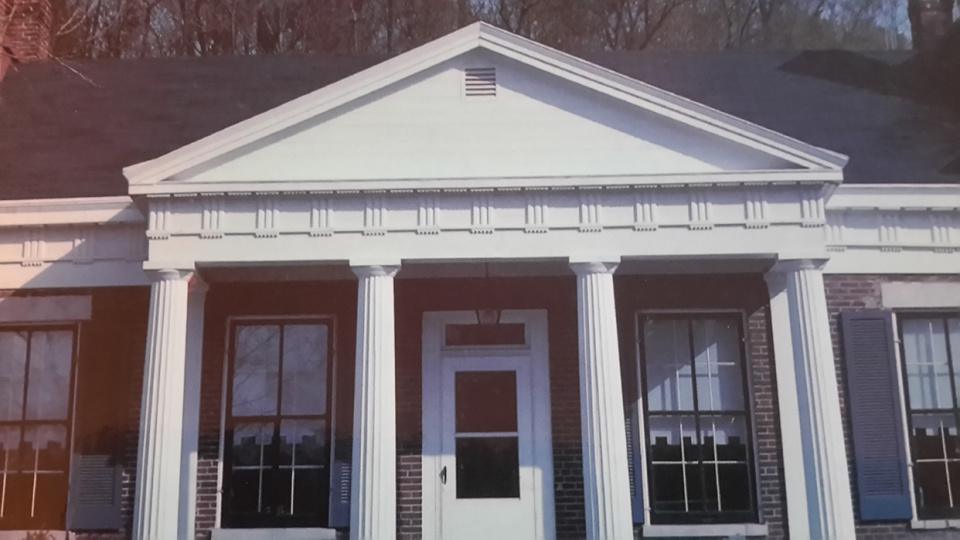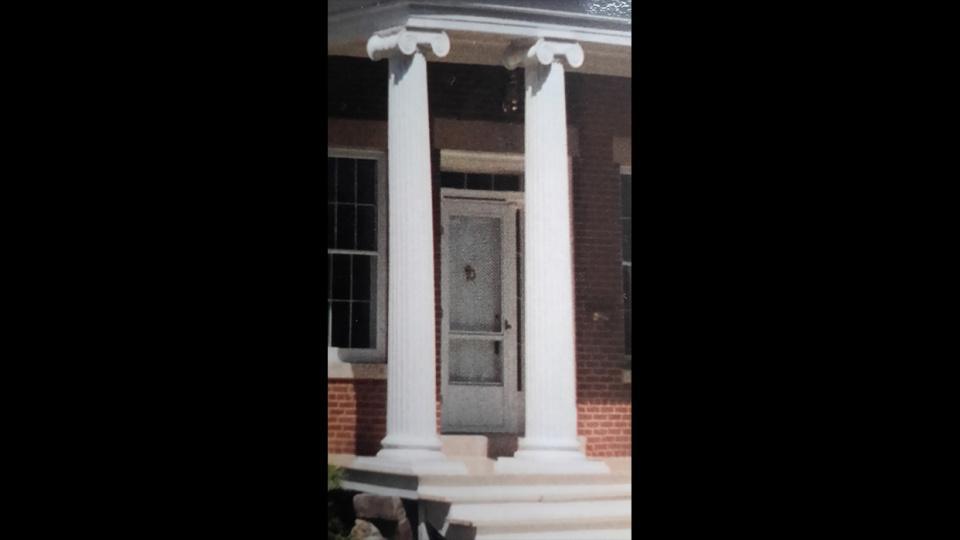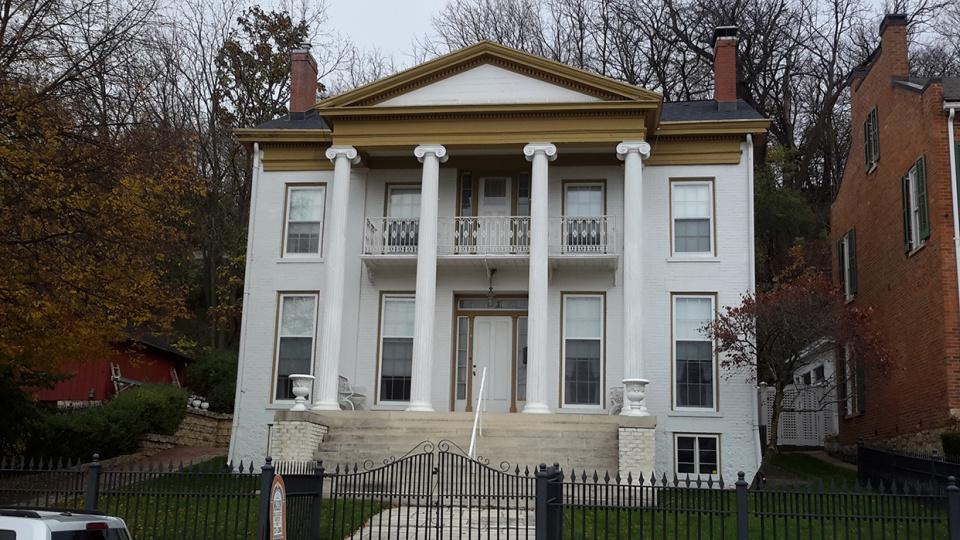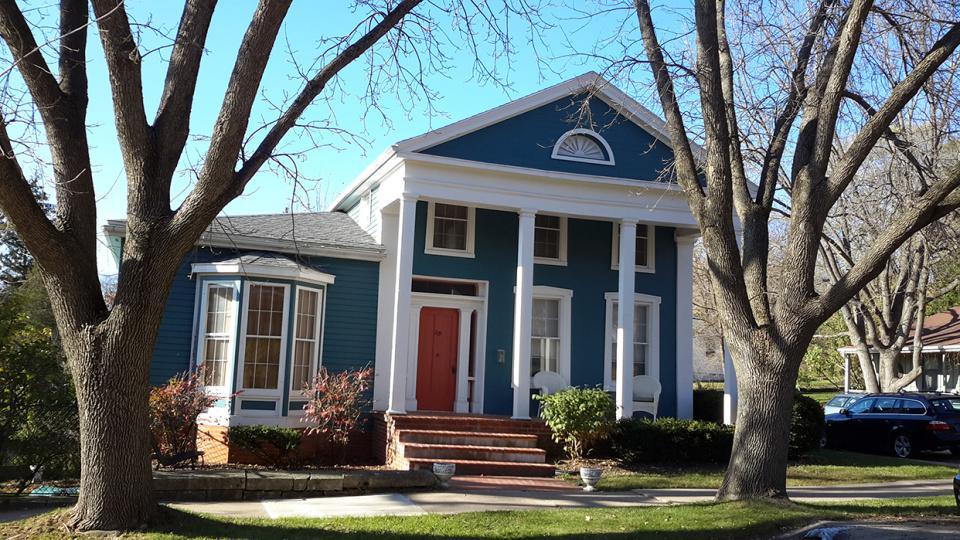- The triangular "front-gable" design which faces the street. This is called a pediment. It differs from a gable because gables are located on the end of a building whereas the pediment is located over the door and if often supported by pillars.
- Roofs are low pitched and rarely have dormers.
- The projecting entry porch has tall, round wooden columns or pilasters. A pilaster is a rectangular support that resembles a flat column which projects slightly from the wall. Columns and pilasters are among the most common elements of Greek Revival.
- Columns are typically round, however can be square or even octagon in shape.
- Columns are designed without bases and can be smooth or fluted.
- Elaborate door framing was also a common feature. Typically, small-paned sidelights were framed by heavy, wide trim. Sometimes these sidelights were recessed for a more three-dimensional look.
- The transom above the front door is horizontal instead of fanlike which differed from earlier Federal period homes.
- Low pitched gable and hip roofs were typical.
- The cornice line was embellished with a wide band of trim to emphasize the temple-like roof. (The cornice was the projecting molding that forms the top band of a wall.)
- Windows are mostly double hung with six panes per sash.
- Greek Revival homes were often painted white to resemble the white marble of impressive and costly public buildings.
01/14/2016




